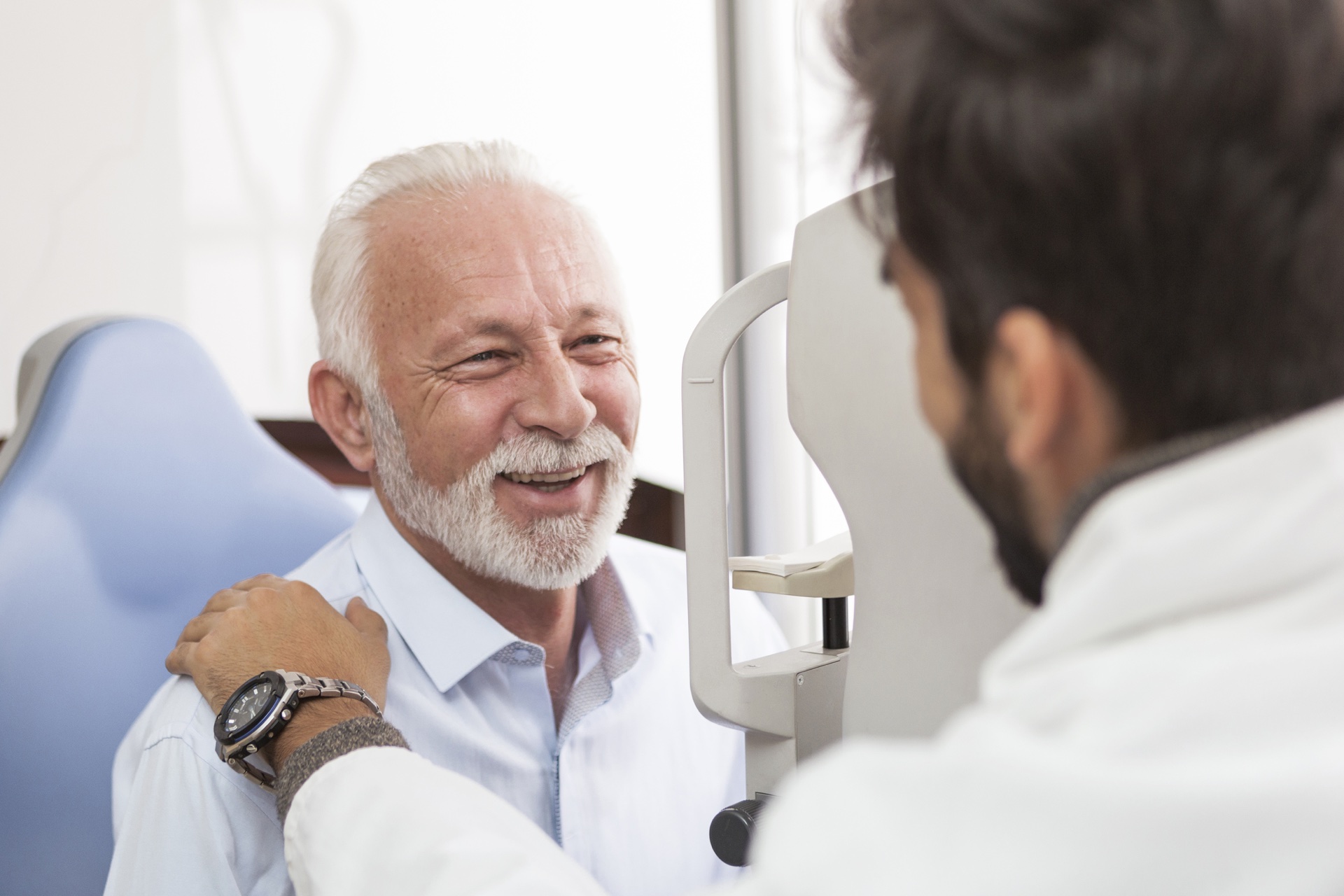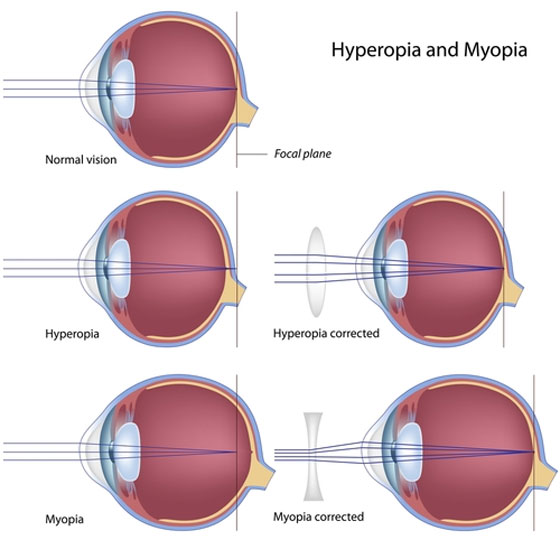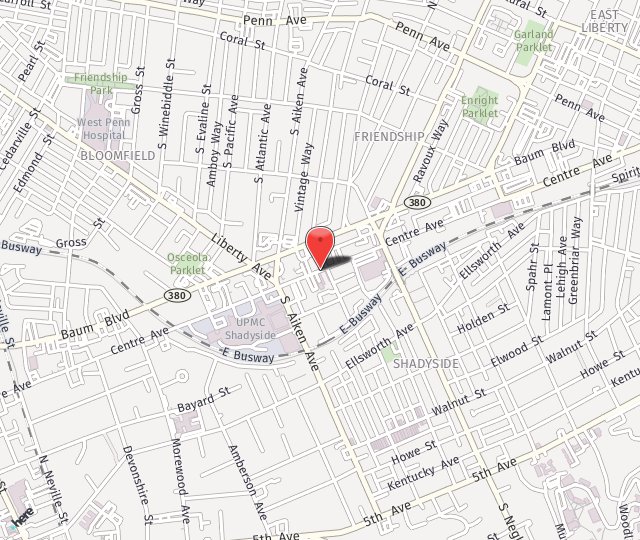Taking care of your eyes is an important part of maintaining your health. At The Cataract & Laser Institute of Pennsylvania, we have the vision resources you need. From routine eye exams and contact lenses to early diagnosis and treatment of eye and vision problems, our goal is to give you the healthiest eyes and best possible vision throughout your lifetime.

How often should I get an eye exam?
Annual eye and vision examinations are an important part of preventive health care. Many eye and vision problems have no obvious signs or symptoms. As a result, individuals are often unaware that problems exist. Early diagnosis and treatment of eye and vision problems are important for maintaining good vision and eye health and, when possible, preventing vision loss.
Why is an eye exam so important to my overall health?
A comprehensive eye examination is the best way to identify a wide range of problems affecting vision function. At The Cataract & Laser Institute of Pennsylvania, we use the latest technology for our exams. Our staff has years of experience in diagnosing and treating a variety of eye problems and issues. We are committed to providing the highest level of care to each and every one of our patients.

Who should get their eyes examined?
Eye examinations are an important part of health maintenance for everyone. Adults should have their eyes tested to keep their prescriptions current and to check for early signs of eye disease.
Children’s eye exams are important to ensure normal vision development. Additionally, vision is closely linked to the learning process. Children with undetected vision problems often will have trouble with their schoolwork. Many times, children will not complain of vision problems simply because they don’t know what “normal” vision looks like.
Can I just get a vision screening instead of a Comprehensive Eye Exam?
Vision screenings are limited eye tests that help identify people who are at risk for vision problems. These are the brief vision tests performed by the school nurse, a pediatrician, other health care providers, or volunteers.
The eye test that you take when you get your driver’s license renewed is an example of a vision screening.
Keep in mind that a vision screening can indicate that you need to get your eyes checked, but it does not serve as a substitute for a comprehensive eye exam.
A comprehensive eye examination is performed by an eye doctor and includes careful testing of all aspects of your vision. Based on the results of your exam, your eye doctor will then recommend a treatment plan for your individual needs.
What should I bring with me to my eye exam?
Bring a list of any prescription and non-prescription medications you are currently taking. Include vitamins, herbs, and other remedies you may use. Include the dosages you take for each medicine or other substance, and how long you have been taking them.
If you currently wear corrective lenses, bring all pairs of eyeglasses you wear routinely. If you wear contacts that were prescribed elsewhere, bring a copy of your most recent contact lens prescription.
Also, be sure to bring your driver’s license and a copy of your vision insurance card and/or any other medical insurance cards you have if you are seeking insurance coverage for a portion of your fees.
What can I expect at my Comprehensive Eye Exam?
A comprehensive adult eye and vision examination may include but is not limited to, the following tests. Individual patient signs and symptoms, along with the professional judgment of the doctor, may significantly influence the testing performed.

Patient History
A patient history helps to determine any symptoms you are experiencing, when they began, the presence of any general health problems, medications taken, and occupational or environmental conditions that may be affecting vision. The doctor will ask about any eye or vision problems you may be having and about your overall health. The doctor will also ask about any previous eye or health conditions of you and your family members.
Visual Acuity
Visual acuity measurements evaluate how clearly each eye is seeing. As part of the testing, you are asked to read letters on distance and near reading charts. The results of visual acuity testing are written as a fraction such as 20/40.
When testing distance vision, the top number in the fraction is the standard distance at which testing is done, 20 feet. The bottom number is the smallest letter size you were able to read. A person with 20/40 visual acuity would have to get within 20 feet of a letter that should be seen at 40 feet in order to see it clearly. Normal distance visual acuity is 20/20.
Preliminary Tests
Preliminary testing may include evaluation of specific aspects of visual function and eye health such as depth perception, color vision, eye muscle movements, peripheral or side vision, and the way your pupils respond to light.
Keratometry
This test measures the curvature of the cornea, the clear outer surface of the eye, by focusing a circle of light on the cornea and measuring its reflection. This measurement is particularly critical in determining the proper fit for contact lenses and for intraocular lenses.
Refraction
Refraction is conducted to determine the appropriate lens power needed to compensate for any refractive error (nearsightedness, farsightedness, or astigmatism).
We use an autorefractor to determine the correct lens prescription for your eyes. The measurement taken by an autorefractor can be translated into a prescription for your eyeglasses or contacts.
Eye Focusing, Eye Teaming, and Eye Movement Testing
Assessment of accommodation, ocular motility, and binocular vision determines how well the eyes focus, move, and work together. In order to obtain a clear, single image of what is being viewed, the eyes must effectively change focus, move, and work in unison. This testing will look for problems that keep your eyes from focusing effectively or make using both eyes together difficult.
Eye Health Evaluation
External examination of the eye includes evaluation of the cornea, eyelids, conjunctiva, and surrounding eye tissue using bright light and magnification.
Evaluation of the lens, retina, and posterior section of the eye may be done through a dilated pupil to provide a better view of the internal structures of the eye.
Supplemental Testing
Additional testing may be needed based on the results of the previous tests to confirm or rule out possible problems, to clarify uncertain findings, or to provide a more in-depth assessment.
At the completion of the examination, your doctor will assess and evaluate the results of the testing to determine a diagnosis and develop a treatment plan. He or she will discuss with you the nature of any visual or eye health problems found and explain available treatment options.
You can trust our doctors to properly diagnose your current eye problem and offer a treatment program that is tailored to your specific needs. Our eye examinations will ensure that we have the full understanding of the diagnosis and the treatment options available.
Common Eye Conditions
Myopia or nearsightedness means you can see better up close than you can at far distances, as shown on the left-hand photograph below. Nearsightedness can occur when your cornea is curved too much or, more commonly, when your actual eye is longer than normal. Nearsighted glasses, contact lenses, and LASIK are all used to correct vision.
What is Hyperopia (Farsightedness)?
Hyperopia or farsightedness means that you can see better far away than you can close up. Farsightedness is caused by the actual eye being too short or the focusing power of the eye is too weak. Farsighted glasses, contact lenses, and LASIK are all used to correct vision.

What is Astigmatism?
Patients with astigmatism have distortion of vision in addition to the blurring of vision. Normally, the eye is shaped round like a basketball; however, with astigmatism, the eye is shaped more like a football. Astigmatism is corrected with glasses, contact lenses, LASIK surgery, or Limbal Relaxing Incision (LRI). LRI is a surgical procedure, performed by Dr. Benjamin Chun, where incisions are made at the opposite edges of the cornea. The incisions reshape the cornea. Because the incisions are outside the field of view, they do not cause glare or other visual effects.





